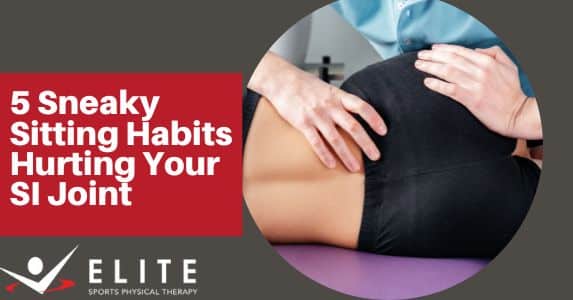Are you struggling at your desk with persistent lower back or hip pain? If you’re feeling achy stiffness, sharp twinges, or a dull ache in your lower back, buttocks, or legs, the problem might be hiding in plain sight: your sacroiliac (SI) joints. Located at the base of your spine, these essential joints connect your spine to your pelvis, helping to support your upper body and transferring forces between your upper and lower body. Despite their stability, these joints have a limited range of motion, making them prone to dysfunction from daily habits like prolonged sitting, especially with poor posture.
Recognize the Signs of SI Joint Dysfunction
SI joint dysfunction, triggered by too much or too little movement in these joints, is a common issue for people who spend hours sitting each day. This often presents as pain in the lower back, buttocks, and sometimes legs, particularly after sitting, standing, or climbing stairs. You may also experience stiffness in the lower back and hips, especially after rest, or tenderness, clicking, or popping sensations around the SI joints. Fortunately, even small changes to how you sit and some simple SI joint pain exercises can make a huge difference in managing these symptoms and reclaiming your comfort. Let’s look at the sneaky habits that could be sabotaging your SI joints and discover how to find relief.
5 Common Sitting Habits That Harm Your SI Joints
- The Slumped Sitter: Slouching while sitting places excessive stress on your SI joints. Over time, this poor posture can trigger pain and discomfort.
- The Fix: Practice good posture! How to sit with SI joint pain: Sit upright with your shoulders relaxed, feet flat on the floor, and use lumbar support if needed. Additionally, strengthen your core with exercises like bridge poses and pelvic tilts to improve stability.
- Crossed Legs: Frequently crossing your legs, especially for extended periods, can misalign your pelvis and stress your SI joints.
- The Fix: Aim to sit with both feet flat on the floor, or try alternating which leg you cross to avoid prolonged pressure on one side.
- The Couch Potato: Soft surfaces like couches and plush chairs offer minimal support, causing your SI joints to work overtime to maintain stability.
- The Fix: Opt for firmer chairs that promote proper posture. If you must sit on a soft surface, use a pillow or cushion to provide extra support for your lower back.
- The Marathon Sitter: Prolonged sitting, whether at a desk or in a car, restricts blood flow to your SI joints, leading to stiffness and increased risk of injury.
- The Fix: Take frequent breaks to stand up, stretch, and move around. Set a timer to remind yourself to change positions every 30 minutes.
- The Uneven Sitter: Favoring one side of your body while sitting, such as leaning on one hip, creates imbalances that strain your SI joints.
- The Fix: Be mindful of how you sit! Distribute your weight evenly on both hips, and avoid leaning to one side for prolonged periods.
Being mindful of these common habits and making small sitting adjustments allows you to protect your SI joints and enjoy a more comfortable lifestyle.
Simple SI Joint Pain Exercises: Start & End Your Day Right
Long hours in a chair can exacerbate SI joint pain, but these targeted exercises can offer relief at the end of the day and strengthen the supporting muscles. Bridge Pose is a great place to start, activating the glutes and core to stabilize the pelvis. Clamshell strengthens the outer hip muscles, which are important for pelvic alignment. Finally, Child’s Pose offers a gentle stretch for the lower back and hips, easing tension and discomfort. Remember, consistency is key, so aim to perform these exercises regularly and consult a physical therapist for personalized guidance.
Say goodbye to SI joint pain! Our physical therapists provide personalized treatment plans, including targeted exercises, to help you move freely again. Contact us now to schedule your appointment and start living an active life.

